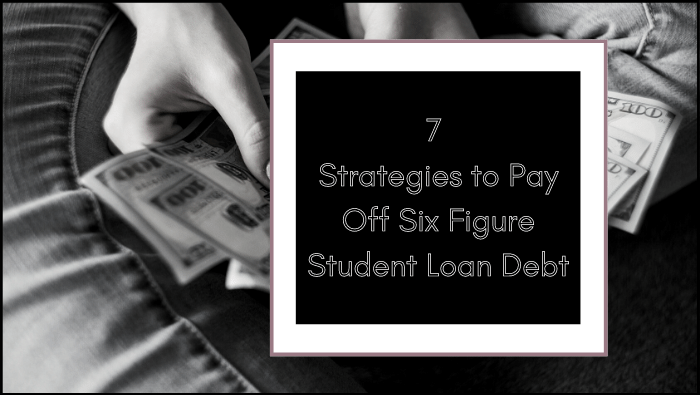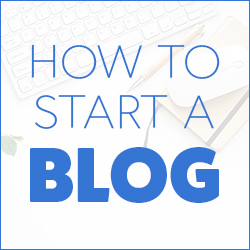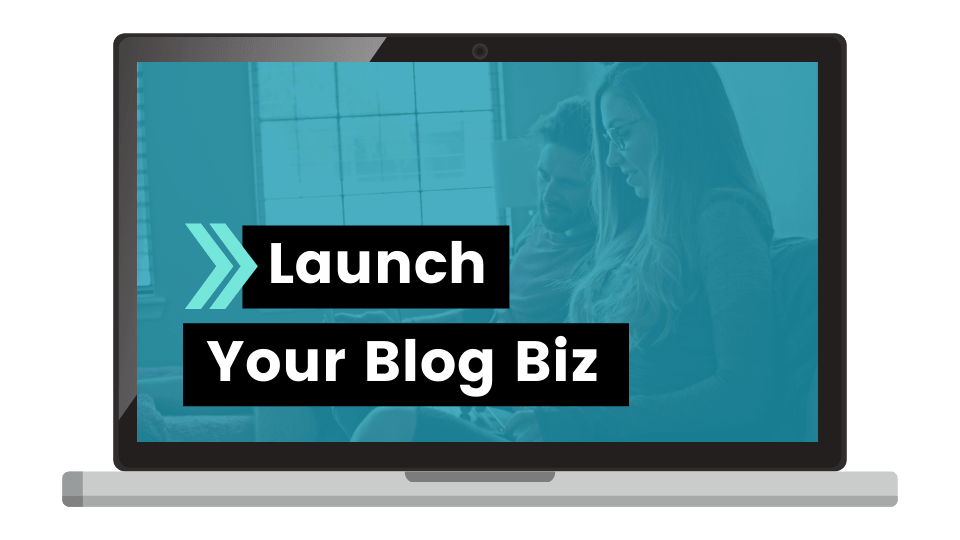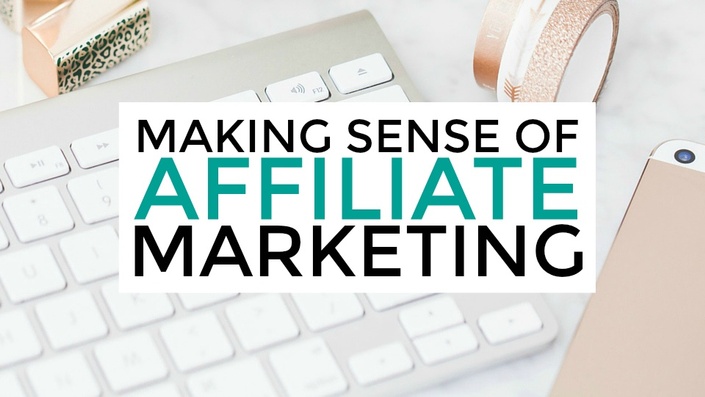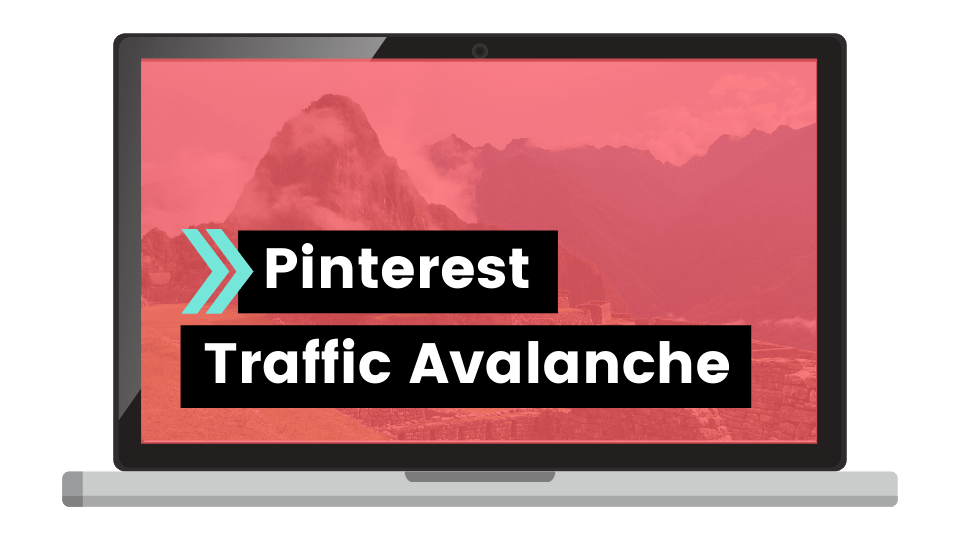I graduated from law school in 2014 with over $160,000 in student loan debt.
I now have less than $60,000 in loans to pay off (see the full story about my loans here).
When I first saw the amount of debt I was in, I felt devastated and helpless.
But with the help of the following 7 strategies, I became educated and empowered.
I’m now well on my way to becoming completely debt-free within the next year or so.
Disclosure: This article may contain affiliate links that direct you to another business’s goods and/or services. If you purchase anything through the links I provide, I may receive compensation or a commission – a percentage of the sales price you pay – at no additional cost to you. Please know that I only recommend products and services that I personally use and love, or those that I have thoroughly researched and believe would be of value to you.

Click the image to start your own blog or website through Bluehost.
1. I used a hybrid approach to the debt avalanche/debt snowball methods.
Two popular methods to paying debt off are the “debt avalanche method” and the “debt snowball method.”
Both methods involve paying the minimum payment on each debt you may have, then targeting one debt in a specific way.
Debt Avalanche Method:
- You pay the minimum required payment on all loans you have, except the debt with the highest interest rate.
- You target the debt with the highest interest rate by putting any extra cash you have toward paying off this loan.
- Mathematically, this method should save you more money than the snowball method in the long run, because you will be paying less interest over time. Of course, this depends on your specific situation.
- Using this method, once you pay off the loan with the highest interest rate, you then target the loan with the next highest interest rate, and so on.
Debt Snowball Method:
- Again, you pay the minimum required payment on all loans you have, except the debt with the lowest balance (regardless of interest rate).
- You target the debt with the lowest balance by putting any and all extra income toward this loan.
- Recommended by financial expert Dave Ramsey in his book Total Money Makeover.
- This method might at, first glance seem, less cost-effective than the previous method because it essentially ignores the fact that interest may be accruing at a higher rate on one of your other loans.
- The theory behind this method’s effectiveness is not so much in the math, but rather in the motivation you gain by seeing your debts eliminated completely.
- Once you see your smallest loan amount go down to zero, hypothetically you will feel more energized and inspired to tackle the next smallest loan, then the next.
Once I learned about these techniques (and wasn’t blindly throwing money at my loans with no plan), I started with the debt snowball method.
I changed my repayment plan to an income-based repayment plan, so I could make the minimum possible payments on all of my loans except one.
In the beginning, the smallest loan I had was around $2,000. I paid that one off almost immediately (seriously, I think I paid it off the month after I learned about the debt snowball method).
And I agreed with Dave Ramsey – I DID feel extremely motivated seeing that loan go down to zero. I got an email from my loan servicer saying that debt was “paid in full” and it felt AMAZING.
That debt could be checked off my list for eternity!
Click the image to take this course and learn how to start and launch your blog business and make your first $1,000 a month!
But, I still had 10 other student loans.
 Each one with a different balance and interest rate. My largest loan had a balance of over $25,000, with a very high interest rate – close to 8%.
Each one with a different balance and interest rate. My largest loan had a balance of over $25,000, with a very high interest rate – close to 8%.
When I ran the numbers, I just couldn’t stomach the amount of interest I would end up paying on that very big loan if I left it until the end to pay off (as the debt snowball method would suggest doing).
So I decided against continuing the snowball method and tackled that loan next.
And let me tell you IT SUCKED.
At the time, I had enough money left over at the end of the month to put anywhere between $800 and sometimes up to $2,500 towards this gigantic loan (see the living cheaply and cutting expenses sections below).
And even with these, in my opinion, outrageous amounts going toward the loan every single month it was still months before I even saw a dent in the principal balance.
My loan had already accrued so much interest that this all I was paying on this loan for a long period of time.
Throwing money at this loan without seeing a single penny of my overall principal loan balance reduced was so incredibly discouraging. It took tons of persistence and determination on my part to keep at it month after month.
Once I finally paid off that enormous loan, I went back to the snowball method for a couple of reasons:
One, I really believed that seeing my loans go down to zero gave me the incentive and ambition to work harder to pay off each loan. I love checking things off of lists, once the box was checked I never, ever had to worry about that particular loan again.
Two, with the varying amounts and interest rates of my remaining loans, it also made mathematical sense to me to proceed with the snowball method. The really large loans I had left had relatively low interest rates, so the smaller ones with higher interest rates were acquiring just as much interest.
While I definitely understand the math of the avalanche method, and also have experienced the motivation factor involved in the snowball method, which method is “better” to use is really unique to you and your specific financial situation.
Click the image to join this course and learn exactly how Michelle Schroeder makes over $50,000 in affiliate marketing each month!
2. I lived cheaply.
 Don’t get mad at me, but I lived RENT FREE for a number of months while I was paying off my loans.
Don’t get mad at me, but I lived RENT FREE for a number of months while I was paying off my loans.
I know not everyone has this as an option so I knew how lucky to have such an amazing family that gave me the ability to cut that expense from my life.
For about six months I lived at my aunt and uncle’s cabin free of charge, and then for the next year my now-fiancé and I lived with my parents rent-free (I know, typical millennials!).
The progress I made toward becoming debt-free during that time was substantial, and I’m so SO grateful to my family for helping me out when they absolutely did not have to.
Outside of that year and a half, I’ve lived in apartments with standard (if not maybe a little more expensive) rent/utility costs, but I’ve also lived cheaply in other ways…
3. I REALLY cut my expenses.
I’ve never paid for cable.
I’ve spent virtually zero dollars decorating the places I’ve lived.
I’ve picked up free furniture (literally off the side of the road, more than once!) to furnish my apartments.
When I lived alone, my entertainment expenses were less than $100 a month (compare this to my years in law school where I would spend over $700 a month on going out to eat and other extremely frivolous purchases).
Sometimes my frugality went too far, like nights where I ate Doritos and drank leftover Franzia for dinner instead of risking an expensive grocery bill (expensive meaning anything more than $20).
But I also learned that I didn’t always need to go out to eat or buy new things.
I was actually really content to spend the majority of my time outside of work hanging out with my dog and chatting with friends and family on the phone.
I have splurged here and there, and recognize that I have a lot of advantages that most people don’t have.
I don’t have any dependents besides my dog (who is actually really needy), I have a SUPER supportive family who would have always bailed me out if worst came to worst (luckily it never did), and I had an education that allowed me a decent job and opportunities that are denied to many.
But privilege aside, I did work really hard to chip away at my debt and lived (sometimes unnecessarily) uncomfortably at times in order to achieve my financial goals.
Additionally….
4. I used windfalls to pay my loans.
Raises, tax returns, birthday gifts, cash I found in my jeans, any extra income that wasn’t part of my usual paycheck.
You name it, I spent it on my loans.
Click the image to join this course and learn how to grow your business through Pinterest from two bloggers with two six-figure blogs!
5. I read a lot.
 I knew NOTHING about personal finance before I got my initial student loan bill.
I knew NOTHING about personal finance before I got my initial student loan bill.
Even as I sat in an “accounting for lawyers” class in law school, I was oblivious to what was going on in my bank accounts.
I had so much student loan refund money in my bank account that I never really worried about my savings because I always had enough (albeit it was not my money).
When I finally realized how much debt I was going to have to pay off, I knew something had to change. So I started doing something that I did have experience in – studying!
I started reading personal finance books, I followed personal finance blogs, and I binge-listened to personal finance podcasts/interviews.
Under no circumstances do I consider myself a personal finance “expert,” but learning more about finance worked miracles for my personal situation.
6. I missed out sometimes.
My friends and family must have hated me at the height of my student loan debt payoff experience.
First of all, I never stopped talking (and by talking, I mean complaining) about my loans. I always found a way to sneak in the topic of debt into a conversation, like a real-life Debbie Downer.
When I think back on how many times I let my debt consume my life, in such a negative way, I just cringe!
On top of this though, I turned down so many fun things!
- There were times when I didn’t want to go out with my friends because I was worried about buying a round of drinks, and I felt like they wouldn’t understand.
- I fretted over gas/travel expenses to go home and see my parents even when I wanted to so badly.
- I sat out on a friend trip to Puerto Vallarta – MEXICO, guys!!
Although in the long run, I probably made some progress on my loans by avoiding these events.
And I suppose hindsight is always 20/20.
But, if I could do it over again, I would try to strike a better balance between enjoying life and becoming debt-free.
7. I always had my end goal in mind.
My student loans were always, and continue to be, consistent thoughts in my head.
Although this played out negatively at times (see my missed trip to Mexico above), overall, it helped me become a more disciplined, financially-savvy, and goal-oriented person.
I learned personal finance, I decluttered my space and prevented unnecessary material things from coming into my environment, and I experienced a lot of “wins” that made me feel great about myself.
Every time I submit a payment, whether it’s $25 or $2,500, I feel one step closer to financial freedom – and there is not a much better feeling than that!
Even though I still have a ways to go before I can say my final goodbye to student loan debt, I am nowhere near in the same mindset as I was five years ago.
The strategies I’ve listed helped me to have a more hopeful, positive outlook on my financial future which, to me, is invaluable.
I KNOW I can pay off my debts, because I’ve proven it over and over (to the tune of over $100,000).
And guess what? I know you can too.

